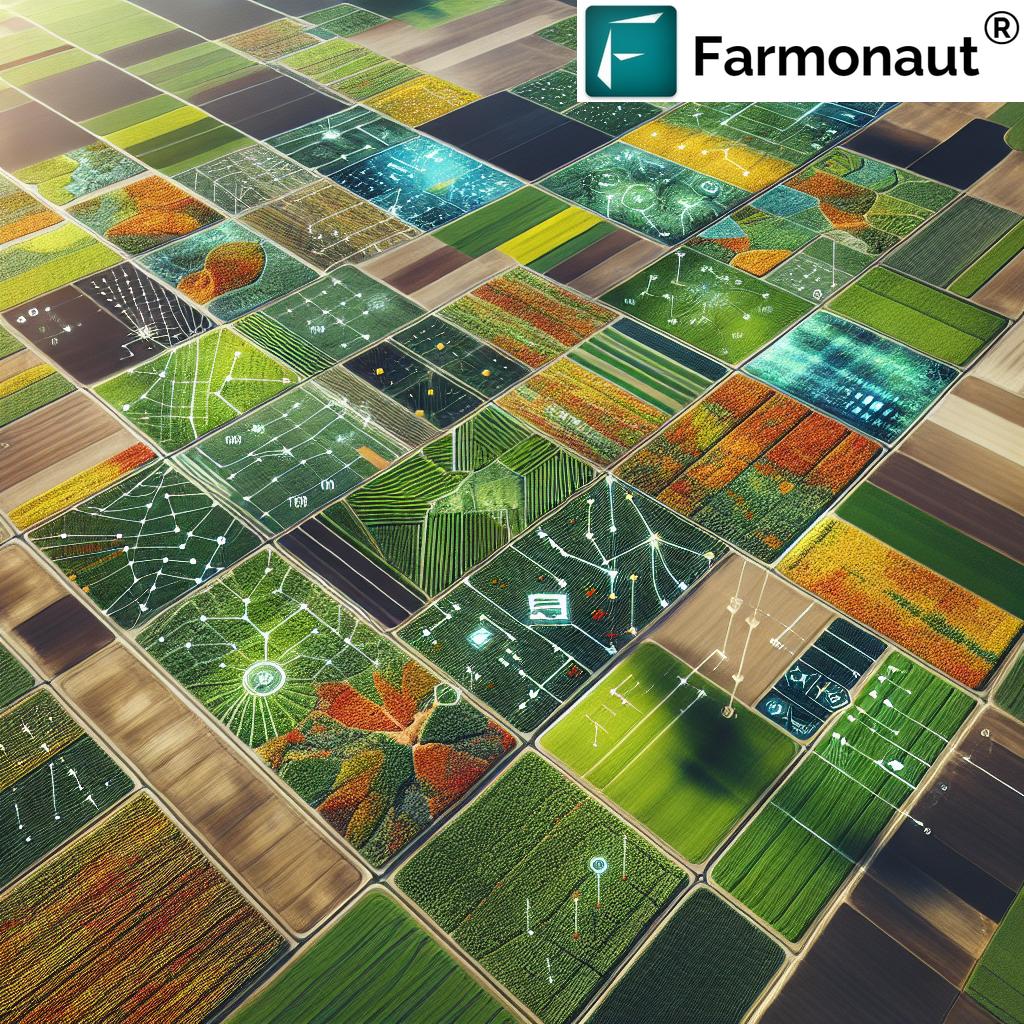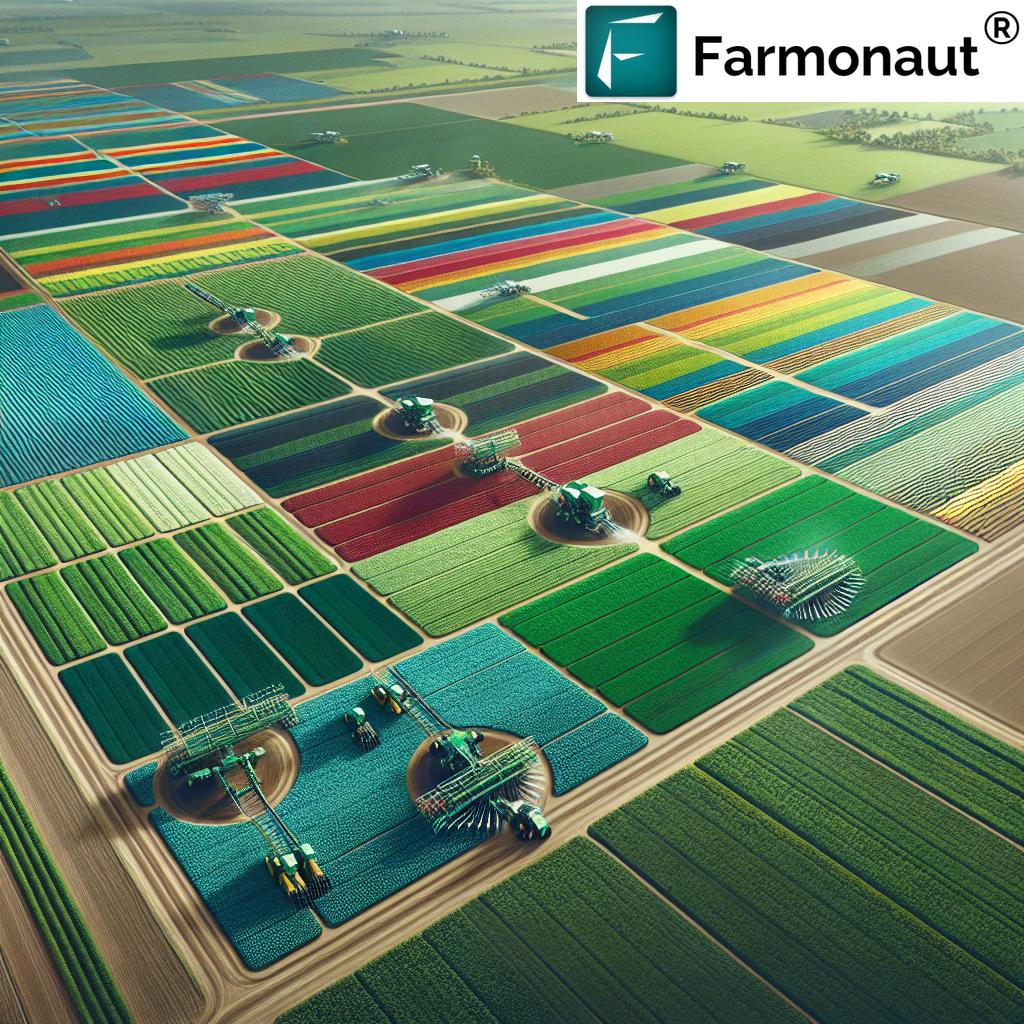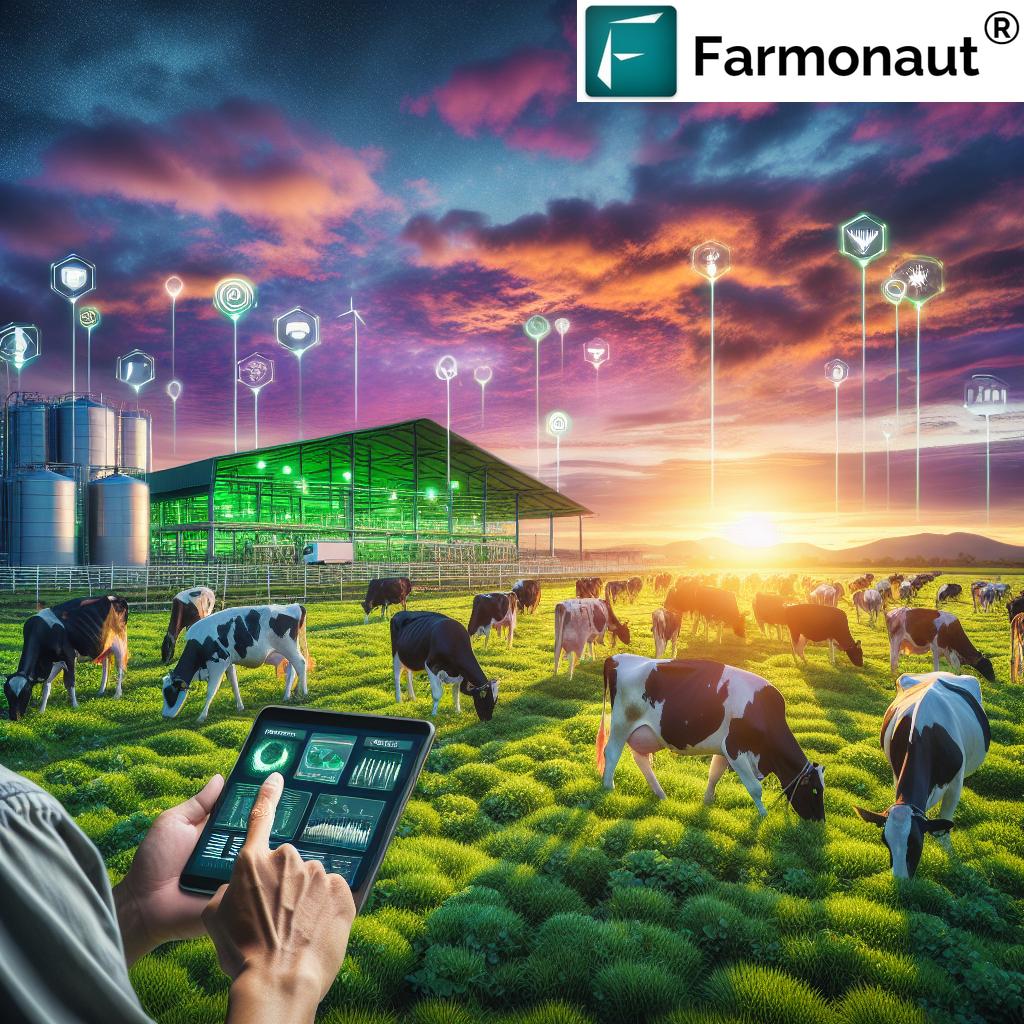Farmers Use Sensors to Improve Soil and Water Management: How Precision Irrigation is Revolutionizing Agriculture in 2025
“Soil moisture sensors can reduce farm water use by up to 30%, boosting sustainability in precision agriculture.”
Introduction: Why Sensor Technology is Essential in Modern Agriculture
As global challenges such as water scarcity and soil degradation intensify due to climate change and population growth, the urgent need for sustainable soil and water management in agriculture becomes increasingly clear. How can farmers grow more with less, protect the environment, and ensure long-term agricultural productivity? The answer lies in the revolutionary use of soil moisture sensors and precision irrigation—technologies redefining the way we manage resources, care for soil health, and cultivate crops efficiently and sustainably in 2025 and beyond.
This comprehensive guide explores how farmers use sensors to check how wet the soil is before watering crops, examining the roles of such technology in preventing overwatering, conserving water, promoting healthy soil biology, and integrating with advanced platforms like Farmonaut for greater agricultural insight and operational efficiency.
What is Watering in Agriculture?
Watering in agriculture, often referred to as irrigation, is the controlled application of water to crops to help them thrive. Whether through flood, drip, sprinkler, or advanced automated systems, the aim of watering is to maintain the optimal soil moisture levels necessary for healthy plant growth.
Proper irrigation management is crucial. Underwatering stresses plants and suppresses yields. Meanwhile, overwatering can lead to nutrient leaching, reduced soil aeration, and increased plant susceptibility to diseases. In fact, both extremes—too little or excessive watering—can negatively affect crop yields and degrade soil quality.
- Underwatering: Stresses plants, stunts growth, and limits productivity
- Overwatering: Causes nutrient leaching, diminishes soil aeration, and can lead to disease outbreaks
- Proper Water Management: Maintains optimal moisture for roots, ensuring healthy, vibrant crops
Traditionally, farmers have relied on their experience or set schedules—for example, irrigating every few days, regardless of actual soil needs. While this approach seems practical, it often results in water wastage, suboptimal yields, and unnecessary energy and labor costs.
So, how can technology help farmers achieve better resources use and sustainable farming outcomes?
The Rise of Sensor Technology in Soil and Water Management
The introduction of soil moisture sensors and sensor-based monitoring is rapidly transforming traditional irrigation methods and resource management in agriculture. Agricultural technology now embraces a data-driven approach, offering real-time, accurate information about soil conditions, crop needs, and water use—enabling smarter decisions and more precise practices.
Why Have Sensors Become an Indispensable Tool?
- Global water scarcity: Regions facing drought and limited water availability demand efficiency
- Soil degradation: Overuse of water and synthetic inputs degrades soil over time
- Environmental sustainability: Climate change, resource conservation, and ecosystem protection require innovative technology
- Farm profitability: Preventing wastage cuts costs and improves overall productivity
Today, farmers use sensors to check how wet the soil is before watering crops. By leveraging real-time data, precision irrigation systems can supply exactly the right amount of water—no more, no less—delivered when crops need it most. This prevents overwatering and saves soil health, supporting both the environment and farmers’ bottom lines.
“Farmers use sensors to check how wet the soil is before watering crops. What role does this technology play in resource management? Responses: it wastes more water than normal. It adds fertilizer automatically. It prevents overwatering and saves soil health. It increases chemical use.”
How Do Soil Moisture Sensors Work?
Soil moisture sensors are electronic devices installed at various depths in the soil. Their primary function is to detect the precise level of moisture available to plant roots. Here’s how the process unfolds:
- Sensing: The sensors continuously monitor soil conditions by measuring volumetric water content.
- Data Collection: Sensor readings are sent via wireless networks, giving farmers or automated systems instant access to up-to-the-minute information—right from their mobile or web applications.
- Analysis and Action: When soil moisture drops below a pre-set critical threshold, the system can trigger irrigation—either automatically or by notifying the grower.
- Feedback Loop: Post-irrigation, the sensors provide feedback to ensure the moisture reaches the desired range, avoiding overwatering.

“Farmers using sensor-based irrigation report soil health improvements in nearly 40% of monitored agricultural fields.”
The Role of Soil Moisture Sensors in Resource Management
Why do farmers use sensors to check how wet the soil is before watering crops? What role does this technology play in resource management?
- Prevents Overwatering and Saves Soil Health: Moisture sensors ensure water application is only triggered when necessary, maintaining ideal soil moisture for plant growth. This prevents overwatering and saves soil health, preserving aeration and avoiding runoff.
- Reduces Wastage: By preventing unnecessary watering, substantial water is conserved, particularly vital in drought-prone or water-scarce regions.
- Conserves Energy: Fewer irrigation cycles lead to significant reductions in energy costs associated with pumping and distributing irrigation water.
- Supports Precision Resource Use: Data-driven management means fertilizer or chemical applications can be timed and dosed precisely—sometimes with automated nutrient sensors and applicators (though, contrary to some responses, not all sensor-based systems increase chemical use; many actually reduce it).
Key Functions of Sensors in Resource Management Systems:
- Monitoring: Continuously checks moisture availability at multiple soil depths and locations
- Precision Triggers: Activates irrigation/fertilization only when truly needed (threshold-based)
- Integration: Connects with automated control systems, irrigation scheduling, and sometimes weather forecasting
- Reporting and Communication: Sends data to cloud dashboards, mobile apps, or farm management platforms for visualization and decision-making
Key Benefits of Precision Irrigation with Sensors
- Water Conservation: Saves up to 30% of water compared to traditional irrigation. Only the precise amount needed is applied, and only where required.
- Improved Soil Health: Avoiding excess water maintains soil aeration and structure, supports beneficial organisms, and minimizes nutrient leaching.
- Higher Yields & Better Productivity: Crops grow efficiently thanks to optimal hydration. Stress from underwatering or overwatering is eliminated, boosting crop quality and output.
- Economic Savings: Reduced water, energy, and fertilizer costs increase farm profitability while lowering input waste.
- Faster Data for Smarter Decisions: Real-time sensor feedback enables timely action, preventing problems before they can impact yields.
- Environmental Protection: Less runoff and nutrient leaching protect surrounding ecosystems. Supports sustainable agricultural practices.
- Compatibility with Sustainable & Organic Systems: Sensor-driven irrigation aligns well with organic and regenerative farming, which value soil health and reduced chemical use.
Summary Table: Comparative Impact of Irrigation Methods
| Irrigation Method | Estimated Water Usage (liters/acre/season) |
Estimated Crop Yield Increase (%) | Soil Health Impact | Risk of Overwatering | Sustainability Score |
|---|---|---|---|---|---|
| Traditional Irrigation | 80,000 – 120,000 | 0–5% | Degraded/Unchanged | High | Low |
| Precision Irrigation with Sensors | 50,000 – 80,000 | 10–25% | Improved | Low | High |
Farmonaut’s Contribution to Precision Agriculture and Sustainability
At Farmonaut, we believe that technology-driven resource management is the foundation for a sustainable agricultural future. Our satellite-driven solutions empower users with actionable insights for smarter decision-making in agriculture. By integrating satellite imagery, AI, and blockchain, we help farmers, businesses, and governments achieve higher productivity and sustainability.
Our platform:
- Provides real-time soil health, crop, and environmental monitoring through multispectral satellite images.
- Offers AI-powered advisory for irrigation, fertilization, and disease risk management.
- Supports traceability through blockchain, enhancing supply chain transparency—visit our Product Traceability Page to learn more.
- Delivers carbon footprinting tools to track and reduce agricultural emissions—learn about our Carbon Footprinting Product.
- Simplifies large-scale monitoring for diverse operations with our Large Scale Farm Management Solution.
- Offers API access for seamless integration; explore our API Portal and Developer Documentation.
- Empowers banks and insurance providers with crop loan and insurance verification using satellite data—review our Crop Loan And Insurance Solution.
- Enables sustainable crop plantation, forest advisory, and environmental risk management with innovative data—start today via our Crop Plantation & Forest Advisory Service.
These solutions support resource conservation, healthy soil, and ecosystem protection, perfectly complementing sensor-based irrigation and monitoring.
Advanced Applications and Integrated Sensor Systems
Modern precision farming platforms do more than just monitor moisture. Increasingly, advanced sensor systems are integrated with nutrient sensors, weather stations, and even automated fertilizer applicators. Let’s explore how such integration supercharges resource management:
-
Automated Nutrient Application: When sensors indicate a drop in available nutrients, fertilizer can be applied—often automatically—ensuring crops receive exactly what they need.
However, the most sustainable approach is to apply only as much as is necessary, reducing environmental impact rather than unnecessarily increasing chemical use. - Weather-Driven Adjustments: Connected weather sensors help anticipate rainfall events or drought, refining irrigation schedules in real-time.
- Comprehensive Field Monitoring: Integrates satellite data, soil metrics, weather, and crop health indicators into a unified dashboard, unlocking deeper insight and faster response.
At Farmonaut, we help users harness this integration with satellite monitoring and AI-driven advisory, so farms are equipped for resilience and growth—even in the face of increasingly extreme global climate challenges.
Our environmental impact monitoring features allow users to assess the carbon footprint and ecosystem health of agricultural areas, making sustainable farming a data-backed reality in 2025.
Organic Farming and Sensor Technologies
What is the alternative when synthetic fertilizers and chemicals are not desired? Tia uses natural processes to manage crop production on her farmland. She avoids the use of fertilizers for producing crops. Which alternative agriculture strategy is Tia using?
- a. community watershed management
- b. cropping patterns
- c. integrated pest management
- d. organic farming
In organic farming systems, emphasis is put on composts, crop rotation, cover crops, and biological pest control. Not only does this minimize chemical use, but it also enhances soil structure and water retention. Soil moisture sensors work hand-in-hand with organic practices, enabling growers to irrigate only as needed, protect beneficial soil organisms, and make data-informed decisions to improve overall ecosystem health.
The Future of Soil and Water Management in 2025 and Beyond
As we look to the future, soil and water management in agriculture will be defined by the smart use of technology, real-time monitoring, and a relentless focus on sustainability. The integration of sensors with platforms like Farmonaut is not just a trend but an enduring shift in agricultural practice, where efficiency, productivity, and environmental care are deeply interwoven.
Here’s what the next wave of agricultural resource management promises:
- Hyper-localized Decision-Making: Each field, crop, and microclimate receives tailored irrigation and nutrition, thanks to sensor data and satellite imagery.
- Automated Precision: Robotics and IoT devices will be seamlessly linked to real-time sensors, automating irrigation, fertilization, and even pest management.
- Sustainability Metrics: Carbon monitoring, water footprinting, and impact reporting will be essential farm management tools—read more about Carbon Footprinting Features available for environmental stewardship.
- Risk Reduction: Advanced analytics anticipate risks—climate, water, disease—give farmers the tools to adapt and thrive.
- Greater Transparency: Blockchain technology ensures traceability of crops from farm to table, building consumer trust—find out about Product Traceability Solutions.
Frequently Asked Questions (FAQs): Farmers Use Sensors to Improve Soil and Water Management
1. What is watering in agriculture, and why does it matter?
Watering in agriculture is the application of water to crops in a controlled manner to promote healthy growth. It matters because both underwatering and overwatering can negatively affect plant yields, soil quality, and ultimately, farm profitability.
2. How do farmers use sensors to check how wet the soil is before watering crops?
Farmers install soil moisture sensors at various depths in the soil. These sensors measure the water content and communicate real-time data via wireless networks, allowing precise decision-making about when and how much to irrigate.
3. What role does soil moisture sensor technology play in resource management?
Soil moisture sensor technology prevents overwatering, conserves water, improves soil health, reduces costs, and lessens environmental impact by applying water only when the soil falls below a critical moisture threshold.
4. Do these systems waste more water or increase chemical use?
No, precision irrigation with sensors is designed to reduce water wastage and, when integrated with smart nutrient management, can lower rather than increase chemical use. Automated systems play a key role in maintaining balance for crop needs.
5. Can these sensors be used in organic farming?
Absolutely. Sensor-driven irrigation complements organic farming’s emphasis on soil health, biodiversity, and responsible resource use. It helps organic farmers minimize water wastage and avoid excess nutrient leaching.
6. How is Farmonaut different from traditional farm management tools?
We provide satellite-driven insights, real-time monitoring, and AI-powered advisories on a centralized platform. Our solutions help in resource optimization, environmental impact tracking, and provide blockchain-based traceability for supply chains—not available with traditional standalone tools.
7. Where can I access Farmonaut’s solutions?
Our services are available via Web, Android, and iOS Apps and through APIs for integration. Explore API Developer Documentation for more.
Conclusion: A New Era of Sustainable Farming
The science is clear: soil moisture sensors prevent overwatering and save soil health—true for both conventional and organic agriculture. In 2025, the integration of sensor technology in soil and water management in agriculture is not just an innovation but an indispensable tool. This technology significantly transforms irrigation by providing accurate, real-time content, minimizing unnecessary water use, and ensuring crops receive the right amount of water to thrive.
At Farmonaut, we are committed to offering global access to such innovative, sustainable solutions. By uniting satellite imagery, AI, and sensor data, we help usher in an agricultural revolution—one where yield, soil health, and environmental protection go hand in hand.
Whether you are a smallholder, an agribusiness, or a government agency, now is the time to embrace tool-driven, data-backed resource management for a productive, resilient, and green future.
Get Started with Farmonaut
Ready to revolutionize your irrigation strategy and lead the way in sustainable farming practices? Join us on the Farmonaut platform to access real-time crop and soil monitoring, AI-driven advisories, and comprehensive resource management tools that make a difference—today and for the future.
Subscribe to Farmonaut’s precision agriculture services, scale your insights as needed, and start leveraging the power of satellite and sensor data for lasting agricultural success.











